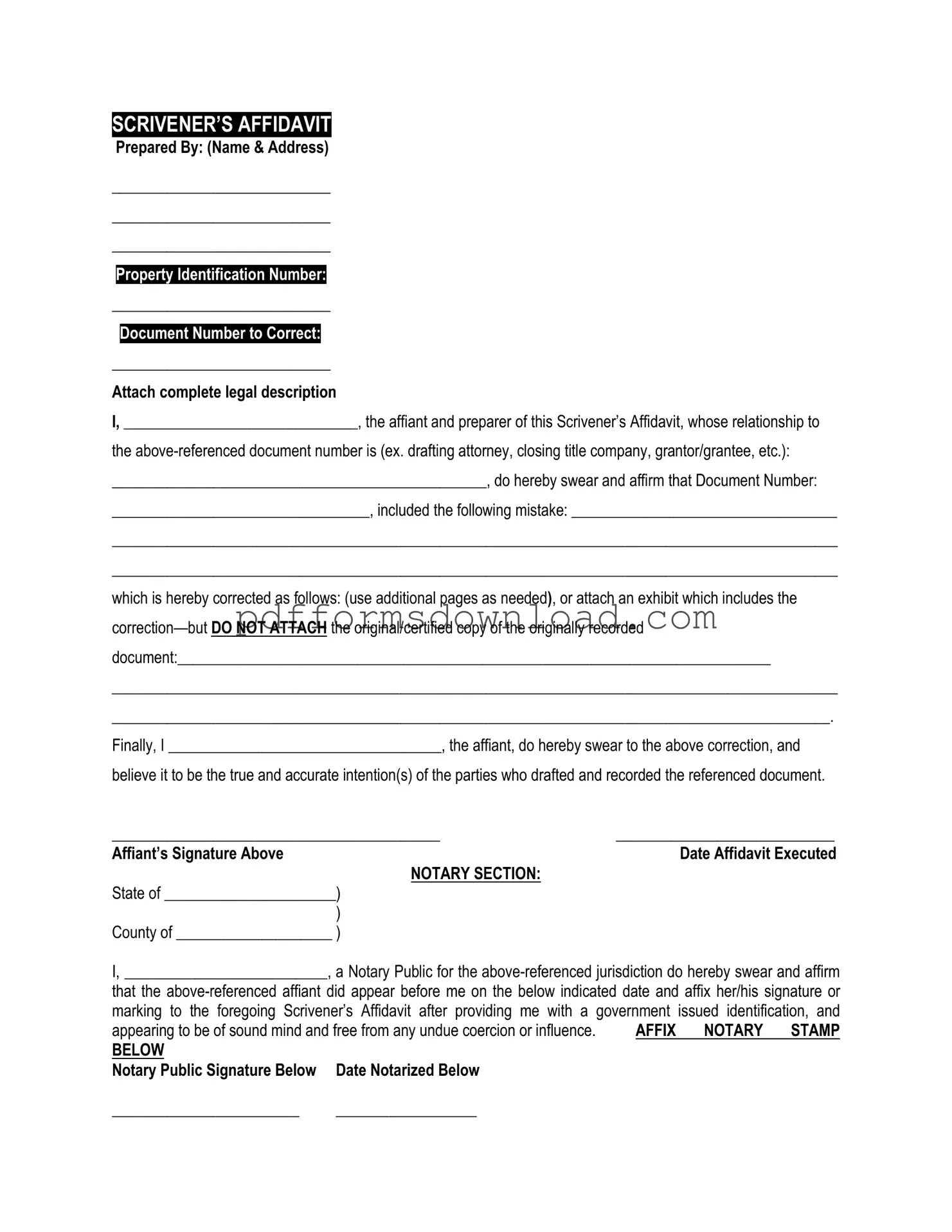What is a Scrivener's Affidavit?
A Scrivener's Affidavit is a legal document often used to correct or clarify errors in a written instrument, such as a deed or a contract. It serves as a sworn statement made by a scrivener, who is typically the individual responsible for drafting the document. This affidavit can provide context, explain discrepancies, or affirm the intentions of the parties involved. It is a tool to ensure that the original intent of the document is preserved, even if mistakes were made during the drafting process.
When should I use a Scrivener's Affidavit?
You may consider using a Scrivener's Affidavit when you identify errors in a legal document that need correction. Common scenarios include misspellings, incorrect dates, or misidentified parties. If these mistakes could lead to misunderstandings or legal complications, an affidavit can clarify the original intent. It is particularly useful in real estate transactions, where accuracy is paramount. By using this form, you can help ensure that all parties have a clear understanding of the agreement.
How do I complete a Scrivener's Affidavit?
Completing a Scrivener's Affidavit involves a few straightforward steps. First, gather all relevant documents that contain the errors. Next, clearly outline the specific mistakes and provide the correct information. It is essential to include details such as the date, parties involved, and the nature of the error. Once you have drafted the affidavit, sign it in front of a notary public to ensure its validity. This step adds an extra layer of credibility, as the notary verifies your identity and the authenticity of your signature.
Do I need a lawyer to file a Scrivener's Affidavit?
What happens after I file a Scrivener's Affidavit?
After filing a Scrivener's Affidavit, the document becomes part of the public record. This means that it can be accessed by anyone who wishes to view it. The affidavit serves to clarify the original document and can help prevent future disputes regarding the errors it addresses. Depending on the nature of the corrections, you may want to notify all parties involved in the original agreement to ensure everyone is aware of the changes. In some cases, you may also need to record the affidavit with the county clerk or other relevant authority.
